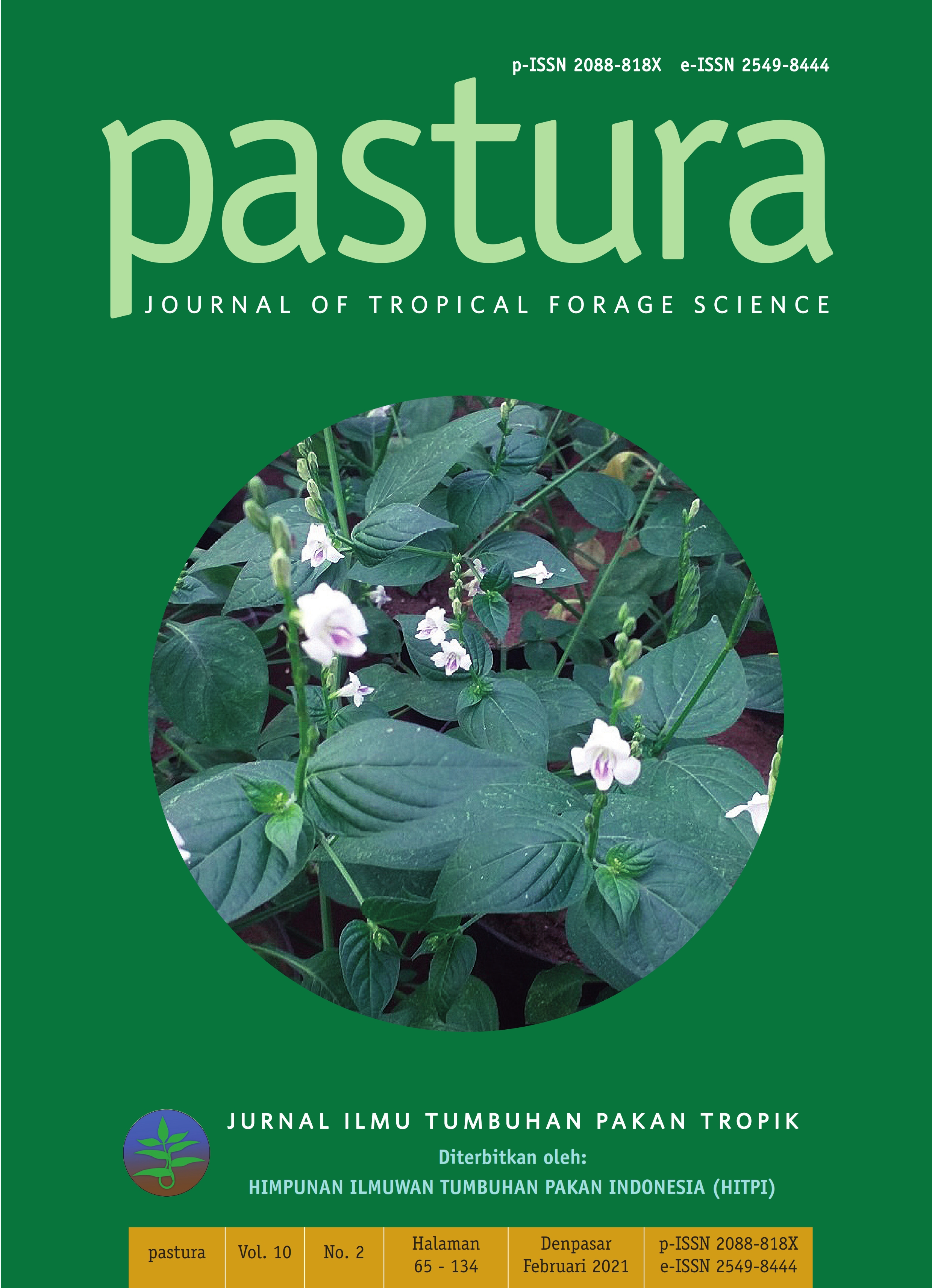RESPONS Clitoria ternatea L. TERHADAP BERBAGAI LEVEL DOSIS DAN LAMA WAKTU INKUBASI INOKULAN RHIZOBIUM
Abstract
Penelitian bertujuan untuk mengetahui respons Clitoria ternatea L. terhadap berbagai level dosis dan lama
waktu inkubasi inokulan Rhizobium, serta untuk mengetahui interaksi antara level dosis inokulan Rhizobium
dan lama inkubasi terhadap respon tanaman C. ternatea. Percobaan dilakukan di Rumah Kaca, Stasiun
Penelitian Sesetan, Fakultas Peternakan, Universitas Udayana di Denpasar, Bali. Percobaan berlangsung
selama 3 bulan, menggunakan rancangan acak lengkap (RAL) pola faktorial. Faktor pertama terdiri atas level dosis Rhizobium yaitu: 0 g kg-1 biji (D0), 7,5 g kg-1 biji (D1), 15 g kg-1 biji (D2) 22,5 g kg-1 biji (D3), faktor kedua terdiri atas lama waktu inkubasi yaitu: 1 jam (W1), 2 jam (W2), 3 jam (W3). Setiap perlakuan diulang sebanyak empat kali, sehingga terdapat 48 unit percobaan. Variabel yang diamati yaitu variabel pertumbuhan, variabel hasil dan variabel karakteristik. Hasil penelitian menunjukkan bahwa terjadi interaksi antara level dosis dan lama waktu inkubasi terhadap variabel bintil akar efektif. Level dosis 22,5 g kg-1
hasil terbaik pada variabel tinggi tanaman, jumlah daun, jumlah cabang, bintil akar efektif, berat kering
daun, berat kering batang, berat kering akar, berat kering total hijauan dan luas daun. Perlakuan waktu
inkubasi 3 jam memberikan hasil tertinggi pada variabel bintil akar efektif, berat kering batang dan berat kering total hijauan. Berdasarkan hasil penelitian dapat disimpulkan bahwa terjadi interaksi antara level
dosis Rhizobium dan lama inkubasi terhadap variabel bintil akar efektif dan perlakuan level dosis Rhizobium
22,5 g kg-1 biji dan lama waktu 3 jam memberikan pengaruh terbaik terhadap tanaman C. ternatea.
Kata kunci: Clitoria ternatea, dosis inokulan Rhizobium, waktu inkubasi





